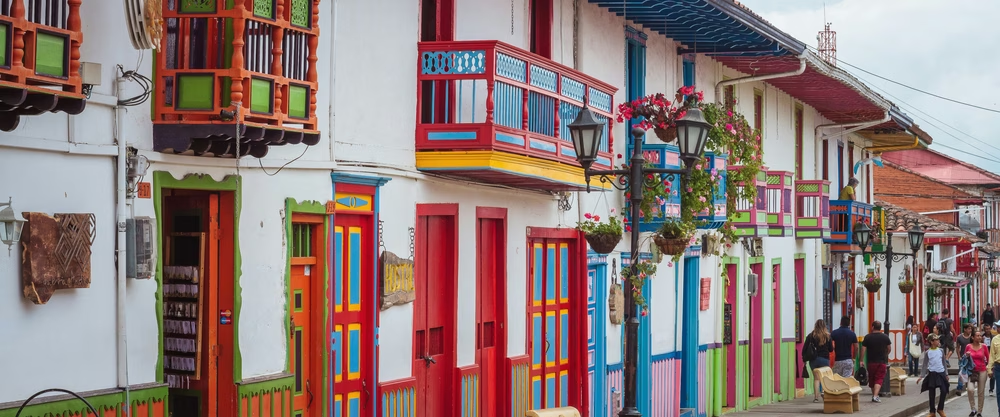

Thinking about studying in Colombia? This article’s got everything you need to know to plan your adventure: from the application requirements if you’re an international student, to the most popular cities, top universities, and the best things to do while you’re there. Plus, we’ll give you tips on where to stay and why Colombia should be at the top of your exchange list.
Known as the coffee country, it’s one of the hottest spots for international students in Latin America. With friendly locals, great universities, stunning landscapes —from Caribbean beaches to the Andes— and a buzzing culture full of music, dance, and tasty food, studying in Colombia is a one-of-a-kind experience you won’t forget!
There are loads of great places to study in Colombia, but it’ll mostly depend on which university your home institution has an agreement with. Bogotá, the capital, is basically the academic hub: loads of unis and a buzzing student and cultural scene. Medellín’s another top pick, with its spring-like weather all year round, lovely locals and a mix of modern and homely vibes. You might also want to check out Cali, famous for its energy, music and laid-back feel, or Barranquilla, a Caribbean city that gives you that proper tropical, coastal experience.
There are a few documents you'll need to hand in, and some procedures you'll need to sort out, including:
Still not sure if Colombia’s the right choice for your exchange? Here are some of the top reasons why it’s totally worth it:
First off, you’ll get to dive into a culture that’s packed with history, traditions, and artistic expressions. Every region has its own vibe, from massive celebrations like Barranquilla’s Carnival to Medellín’s famous Flower Fair. The music, food, and way of life make each day a bit different and never boring.
Another big plus? The people. Loads of international students say one of the best things about Colombia is how warm and friendly everyone is. It’s really common for locals to invite you out, help you if you’re lost, or just have a chat. That type of kindness makes a big difference when you’re settling into a new place.
If Spanish isn’t your first language, this is also a great chance to learn or improve it. The Colombian accent — especially in Bogotá — is super clear and pretty easy to understand. People are generally patient and happy to help if you’re still getting the hang of things, which makes learning feel a lot less stressful.
And lastly (though we could go on), Colombia’s natural and cultural diversity is unreal. You can spend one weekend hiking in the mountains, the next chilling on a Caribbean beach, and after that, wandering around a colonial town. Every place has its own food, accent, and lifestyle. It’s like getting a whole bunch of different countries in one!
One of the best parts of studying in Colombia is everything you can do outside of class. The country is divided into different regions, each with its own unique charm. Here, we’ll tell you some of the things you can do during your stay.
If you’re studying in the Caribbean Region, in places like Cartagena, Barranquilla, or Santa Marta, you’ll be surrounded by beaches, music and loads of history. You can wander around Cartagena’s old town, explore Tayrona Park, go hiking in Sierra Nevada de Santa Marta, or enjoy the Barranquilla Carnival. The coastal culture is lively, super welcoming, and full of party vibes. Plus, the food’s top-notch, with dishes like coconut rice and fried fish with “patacones”.
In the Andean Region, cities like Bogotá, Medellín, Bucaramanga, or Manizales have mountain landscapes and a lively university vibe. Here you can do more hiking, in the Andes, visit charming towns like Villa de Leyva, and check out the famous “Eje Cafetero” (Coffee Axis), with spots like Salento and Pereira, where some of the best coffee in the world is grown. Plus, the cultural scene is amazing, including theatres, concerts, museums, and events for every taste.
For the adventurers, the Amazon Region in the south is where nature’s still totally wild. Places like Leticia, right in the heart of the jungle, are perfect if you want to explore rivers, rainforests, and indigenous cultures. It’s a one-of-a-kind experience, miles away from the noise of city life.
Find the ideal accommodation in your desired location